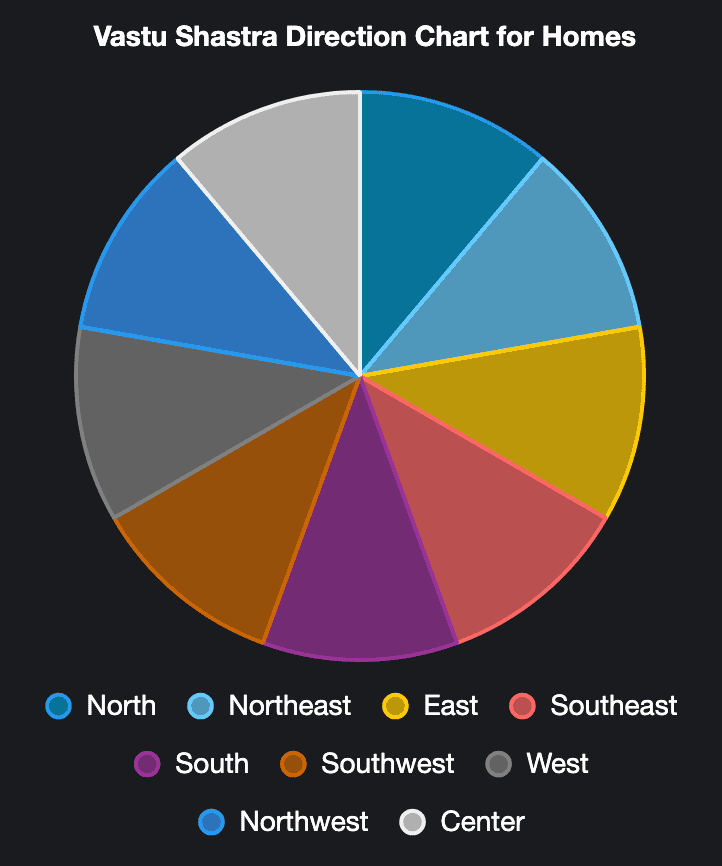Vastu Shastra Tips for Home : Optimal Directions for a Harmonious Home
Vastu Shastra, the ancient Indian science of architecture, is all about harmonizing your home with natural energies to foster peace, prosperity, and well-being. In India, a 2023 Housing.com survey found that 62% of homebuyers prioritize Vastu-compliant designs, which guide everything from plot selection to decor choices. We researched and found these Vastu Shastra Tips for Home that save your time a lot.
Whether you’re building a new home or revamping your current space, these 10 key Vastu factors will help you create a balanced and positive environment.
Let’s dive in with a friendly, practical approach!
Why Is Vastu Shastra Important?

Vastu Shastra goes beyond aesthetics—it’s about creating a home that nurtures your physical, mental, and spiritual well-being. Rooted in Vedic wisdom, it aligns your living space with the five elements (earth, water, fire, air, space) and cosmic energies to promote harmony.
By thoughtfully placing rooms, entrances, and decor, Vastu ensures positive energy flows freely, reducing stress and fostering prosperity. For instance, a north-facing entrance can invite financial growth, while a clutter-free center (Brahmasthan) helps maintain balanced energy.
In a fast-paced world, Vastu transforms your home into a sanctuary of peace.
Where Should Your Main Entrance Be?
The main entrance serves as the gateway for energy to enter your home. Vastu recommends placing it in the north, east, or northeast to attract prosperity, positivity, and sunlight. These directions align with the sun’s path, bringing warmth and vitality. A north-facing entrance is ideal for financial growth, while the northeast, known as the “Ishanya” corner, holds spiritual significance. Avoid southwest or southeast entrances, as they may disrupt energy flow and invite negativity. Ensure the entrance is well-lit, clutter-free, and welcoming, with elements such as a nameplate or plants.
A 2024 study by The Times of India noted that 70% of Vastu-compliant homes in urban India have northeast entrances. Avoid southwest or southeast entrances, as they’re believed to disrupt energy flow.
How Important Is Plot Shape?
The shape of your plot sets the foundation for energy balance. Our Vastu Shastra Tips for Home favors square or rectangular plots due to their symmetry, which promotes an even energy distribution. Irregular shapes, such as triangular or L-shaped plots, can create energy imbalances, potentially affecting health and finances. If your plot isn’t perfectly shaped, Vastu remedies like mirrors or specific plant placements can help.
Select a plot with a gentle slope toward the north or east for improved energy flow.
1. Directions for the Master Bedroom
The southwest corner is the ideal location for the master bedroom, as it’s governed by the earth element, offering stability and grounding energy for the head of the household. Position the bed with the headboard facing south or east for restful sleep.
Avoid bedrooms in the northeast, as this sacred direction is better suited for spiritual activities and may disrupt rest.
Use warm, earthy colors like beige, brown, or pastel shades to create a sense of calmness.
2. Where Should the Kitchen Go?
One of the Vastu Shastra Tips for Home, the kitchen, the heart of your home, belongs in the southeast, ruled by the fire element.
Cooking while facing east is said to promote health and positivity. Ensure the stove and sink are separated, as fire and water elements shouldn’t clash.
Avoid placing the kitchen in the northeast, as it may lead to financial or health issues.
Use vibrant colors like yellow or red sparingly, and keep the space clean and organized.
3. How to Position the Pooja Room?
The northeast is the spiritual epicenter for your pooja room, aligning with divine energy.
Position idols to face east or west for maximum blessings. Keep this space clean, uncluttered, and elevated slightly, if possible.
Use white, light yellow, or pastel shades, and avoid storing non-spiritual items here.
A well-placed pooja room can enhance peace and positivity throughout the home.
4. What’s the Best Spot for the Living Room?
The north or east is perfect for the living room, fostering social connections and positive energy. These directions allow natural light to flood the space, creating a warm and inviting atmosphere. Avoid heavy furniture in the center to keep energy flowing freely. Use light colors like green or blue, and add mirrors in the north or east to amplify positivity.
Arrange seating to encourage conversation and connection.
A 2024 survey by MagicBricks showed 50% of Indian homeowners prefer north-facing living rooms for better energy flow. Avoid heavy furniture in the center to keep energy moving.
5. Where Should Bathrooms Be?
Bathrooms are best in the northwest or southeast, where energy drainage aligns naturally. Avoid the northeast, as it’s a sacred zone, and placing a bathroom here may disrupt spiritual energy. Keep bathrooms clean, well-ventilated, and equipped with proper drainage.
Use light colors like white or pastel blue, and avoid mirrors facing the toilet to prevent negative energy reflection.
How to Balance the Five Elements?

Vastu Shastra revolves around harmonizing the five elements: earth, water, fire, air, and space. Each direction corresponds to an element: north (water), southeast (fire), southwest (earth), northwest (air), and center (space). Align rooms and functions with these elements—place a water tank in the north, for example, to enhance wealth and prosperity.
Imbalances, such as a heavy structure in the center, can disrupt the energy flow.
Why Does the Center Matter?
The Brahmasthan, or center of the home, is the energy hub. Keep it open, uncluttered, and free from heavy structures like pillars or bathrooms to allow energy to circulate freely. A cluttered center can stifle positivity and create stress.
If possible, incorporate a skylight, courtyard, or open space to enhance the flow.
How to Choose Colors and Decor?
Colors and decor shape the energy of your home. Vastu recommends soothing shades like white, light blue, green, or pastel yellow for positivity. Avoid dark colors, such as black or red, in sacred spaces like the pooja room.
Place mirrors in the north or east to amplify energy, but avoid them in bedrooms to prevent sleep disturbances. Add plants in the north or east for growth and vitality.
Vastu Shastra Direction Chart

Vastu Shastra Direction Chart Details
- North (Water): Ideal for main entrance, living room, or water storage. Promotes wealth and growth.
- Northeast (Spiritual): Best for pooja room or meditation space. Enhances spirituality and peace.
- East (Light): Suitable for main entrance or living room. Invites positivity and vitality.
- Southeast (Fire): Perfect for the kitchen. Aligns with the fire element for health and energy.
- South (Stability): Good for storage or secondary bedrooms. Offers stability.
- Southwest (Earth): Ideal for master bedroom. Provides grounding and strength.
- West (Balance): Suitable for dining or children’s rooms. Maintains balance.
- Northwest (Air): Best for bathrooms or guest rooms. Supports movement and change.
- Center (Space): Keep open as the Brahmasthan. Ensures free energy flow.
Wrapping Up
Vastu Shastra is about creating a home that resonates with peace and positivity. By aligning your space with these 10 factors, you’re not just following tradition—you’re crafting a sanctuary that nurtures your family’s well-being.
Start small: tweak your entrance, rearrange a room, or add a plant.
Do you have questions about applying Vastu to your home?
Please share your thoughts, and let’s make your space a haven of harmony!